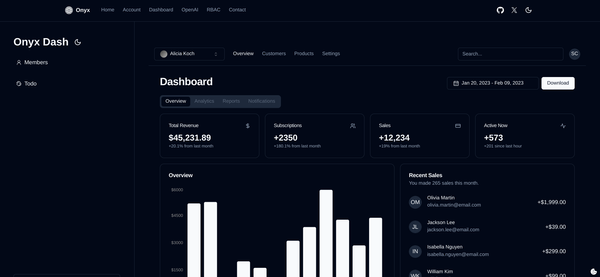Can AI Generate Theories? A Simplified Fibonacci-Based Quantum Optimization Model Part 1
Can AI generate theories was the question...

Can AI Generate Theories was the question I asked myself the other day. And so I thought why not see what Google Gemini can do with a few original ideas and some tinkering. Below we have the results of such a chat. In the Fibonacci-Based Quantum Optimization Model series, we'll explore how wecould theoretically develop a simplified, Fibonacci-based quantum optimization model. Could Fibonacci, once again, prove to be a key to unlocking secrets of our universe?
Problem Selection: Quadratic Unconstrained Binary Optimization (QUBO)
For our simplified model, let's focus on the Quadratic Unconstrained Binary Optimization (QUBO) problem. This is a well-studied problem in optimization and has applications in various fields, including machine learning and finance. A QUBO problem can be expressed as:
minimize Q(x) = sum(sum(Qij * xi * xj))
subject to xi ∈ {0, 1}
where Q is a symmetric matrix of coefficients, x is a vector of binary variables, and the objective is to find the binary vector x that minimizes the quadratic form Q(x).
Implementing a Fibonacci-Based Quantum Optimization Model in Rust
Understanding the Scope
Before diving into the code, let's clarify the scope:
- Quantum Simulator: We'll create a basic quantum simulator to simulate quantum circuits.
- Fibonacci Integration: We'll explore various ways to incorporate Fibonacci numbers into circuit parameters and structure.
- Optimization: We'll implement a basic optimization loop to find optimal circuit parameters for a given QUBO problem.
- Security Considerations: We'll implement basic obfuscation techniques to protect potential vulnerabilities.
Rust Data Structures and Modules
To structure our code, we can use the following modules and data structures:
mod qubit;
mod gate;
mod circuit;
mod optimizer;
#[derive(Debug, Clone, Copy)]
struct Qubit {
// ...
}
#[derive(Debug, Clone, Copy)]
enum Gate {
X,
Y,
Z,
H,
CNOT,
// ...
}
struct Circuit {
qubits: Vec<Qubit>,
gates: Vec<Gate>,
// ...
}
Fibonacci Integration
We can create a module to handle Fibonacci-related calculations:
mod fibonacci {
pub fn fib(n: usize) -> u64 {
// ...
}
pub fn golden_ratio() -> f64 {
// ...
}
// Other Fibonacci-related functions
}
To incorporate Fibonacci numbers into circuit parameters, we can:
- Fibonacci-Based Angle Generation:
fn fibonacci_angles(num_angles: usize) -> Vec<f64> { let mut angles = Vec::new(); for i in 0..num_angles { let fib_num = fibonacci::fib(i) as f64; let angle = fib_num * std::f64::consts::PI / 180.0; // Convert to radians angles.push(angle); } angles } - Fibonacci-Based Circuit Structure:
fn fibonacci_circuit(num_qubits: usize) -> Circuit { // Use Fibonacci numbers to determine number of layers, gates per layer, etc. } - Fibonacci-Based Parameterization:
fn fibonacci_parameters(num_params: usize) -> Vec<f64> { // Use Fibonacci numbers or ratios to generate parameters }
Optimization and Security
The optimizer module will handle the optimization process. We can use a simple gradient-based optimizer or explore more advanced techniques.
For security, we can:
- Randomize Circuit Structure: Introduce random variations in the circuit structure.
- Noise Injection: Add random noise to circuit parameters.
- Parameter Encryption: Encrypt sensitive parameters before storing or transmitting them.
Exploring Fibonacci Integration Techniques
Fibonacci-Based Parameterization
We've already touched on using Fibonacci numbers to generate angles for single-qubit rotations. Let's delve deeper into this:
- Golden Ratio as a Scaling Factor: We can use the golden ratio (φ) to scale the Fibonacci numbers before converting them to angles. This can introduce additional variability in the parameter space.
fn fibonacci_angles_with_golden_ratio(num_angles: usize) -> Vec<f64> { let golden_ratio = fibonacci::golden_ratio(); // ... } - Fibonacci Sequence as a Phase Shift: Instead of using Fibonacci numbers directly for angles, we can use them as indices into a precomputed phase shift sequence. This can introduce more complex patterns.
fn fibonacci_phase_shifts(num_shifts: usize) -> Vec<f64> { // ... }
Fibonacci-Based Circuit Structure
- Fibonacci-Inspired Layer Structure: We can use Fibonacci numbers to determine the number of gates in each layer of the circuit.
- Fibonacci-Based Qubit Coupling: We can use Fibonacci numbers to determine which qubits are coupled in entangling gates.
Fibonacci-Based Quantum Gate Definitions
- Fibonacci-Parameterized Gates: We can create custom quantum gates whose parameters are derived from Fibonacci numbers.
struct FibonacciGate { // ... }
Combining Techniques
We can combine these techniques to create more complex and potentially more effective quantum circuits. For example:
- Use Fibonacci numbers to determine the number of layers and qubits in the circuit.
- Use golden ratio scaled Fibonacci numbers for rotation angles.
- Introduce Fibonacci-based phase shifts for additional complexity.
Security Considerations
While we'll focus on the core implementation first, it's important to keep security in mind. Some potential obfuscation techniques:
- Dynamic Fibonacci Sequences: Generate Fibonacci sequences with random starting values.
- Parameter Encryption: Encrypt circuit parameters before storing or transmitting them.
- Circuit Structure Randomization: Introduce random variations in the circuit structure.
Implementing Basic Quantum Gates and Circuits
Qubit Representation
We'll represent qubits as complex numbers in the form of a vector:
use num_complex::Complex;
#[derive(Debug, Clone, Copy)]
struct Qubit {
state: Complex<f64>,
}
Quantum Gate Implementation
We can define basic quantum gates as functions that operate on qubits or pairs of qubits:
fn x(qubit: &mut Qubit) {
// ...
}
fn h(qubit: &mut Qubit) {
// ...
}
fn cnot(control: &mut Qubit, target: &mut Qubit) {
// ...
}
Quantum Circuit Implementation
A quantum circuit can be represented as a sequence of gates applied to a set of qubits:
struct Circuit {
qubits: Vec<Qubit>,
gates: Vec<Box<dyn Fn(&mut Vec<Qubit>)>>,
}
Fibonacci Integration and Security
We can incorporate Fibonacci-based parameters and security measures as we build out the circuit:
fn create_fibonacci_circuit(num_qubits: usize) -> Circuit {
let mut circuit = Circuit::new(num_qubits);
// Generate dynamic Fibonacci sequence
let fib_seq = generate_dynamic_fibonacci_sequence();
// Use Fibonacci numbers and golden ratio for parameterization
// ...
// Apply gates with encrypted parameters
// ...
circuit
}
In the Next Article
We'll need to:
- Implement the logic for the X, H, and CNOT gates.
- Define the
Circuit::newconstructor. - Implement the
generate_dynamic_fibonacci_sequencefunction. - Explore methods for parameter encryption.




